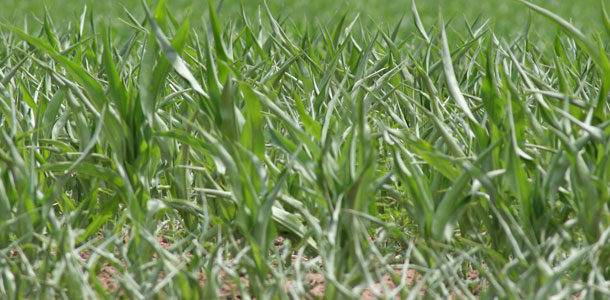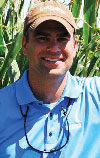Whether your goal is to manage corn silage for high yield or feed quality, your ability to develop consistent, uniform stand establishment is essential.
Minimize stand establishment variability and increase your chances for uniform plant emergence with consistent seed depth. The further these two components are from uniform, the more impact you will begin to notice on yield.
Right seed for right style
When determining what seed to purchase and the accompanying management strategy, remember that 40 percent of overall yield is based on good hybrid selection in addition to other inputs.
Also keep in mind that many variables contribute to forage quality. The most critical – weather – is obviously uncontrollable. Fertility, planting date, soil conditions and herbicide programs – all of which are more controllable – also factor into overall forage quality.
Don’t underestimate the importance of selecting at least two varieties for a quarter-mile to half-mile area to extend the crucial pollination window. I recommend selecting early and later-flowering hybrids.
Management influences
-
Planting: There are a few things to consider in regard to planting corn silage hybrids. One thing we clearly learned last year is: Despite planting late, very good silage yields may still be realized.
Because a silage crop is not pushed by frost, we can plant as late as mid-June.
-
Increased seeding rate: Silage applications often require an increased seeding rate, so establishing a nice stand is even more critical. With increased seeding rate comes the potential for root lodging, but this can be avoided with appropriate row spacing.
-
Soil conditions: Another area of emphasis for dairy operations is preparing perfect soil conditions to combat the combination of corn-on-corn planting, increased manure and increased residue.
If soil is in the proper condition, it can prevent sidewall smearing in the seed trench because the seed trench can properly close. When the trenches close properly, there is a better chance of getting the seed placed at the right depth. Optimum pH and nutrient levels are also critical.
High-yielding hybrids require more nutrients and should be planted in soil with a higher water-holding and nutrient-holding capacity. When it rains, water will move down through the soil instead of running off into waterways and taking valuable nutrients with it. Soils with higher water-holding capacity act more like a sponge, quickly absorbing water and maintaining it in the root zone.
-
Planting equipment: Take extra care to ensure your planter is set up for this type of environment. A few of the main issues I’ve come across include an improper trash-whipper setting and improper closing wheel pressure.
If these aren’t set properly, the trash or crop residue will not be removed. Crop residue in the seed trench affects overall seed-to-soil contact and emergence. Alternatively, if they are set too deeply, it will affect the seed depth.
Be sure your equipment, even new equipment, is properly calibrated. Often the new planters are the ones that take the longest to set up. Don’t assume that your planter is planting corn seed at exactly 2 inches, spaced properly and using the right amount of down pressure.
Always dig out the seed to make sure these things are correct and you are setting the seed up for success. A consistent and firm application helps achieve uniform seed placement and emergence.
- Insects and disease: Another aspect worth addressing with heavy residue is seed corn maggots. Often a 500-grade level of a seed-applied insecticide can pay. Be sure to monitor this pest’s activity after emerging to see if there’s a problem for upcoming years.
Though there are a variety of management styles, the end goal of high return on investment and quality feed should be consistent.
Ensure the best-quality silage possible by monitoring the crop’s moisture content. We all know what a difference moisture levels can make to a growing crop; optimal performance by dairy cows occurs when whole-plant moisture is between 65 and 70 percent. FG

Nick Benson
Corn Product Specialist
Latham Hi-Tech Seeds










